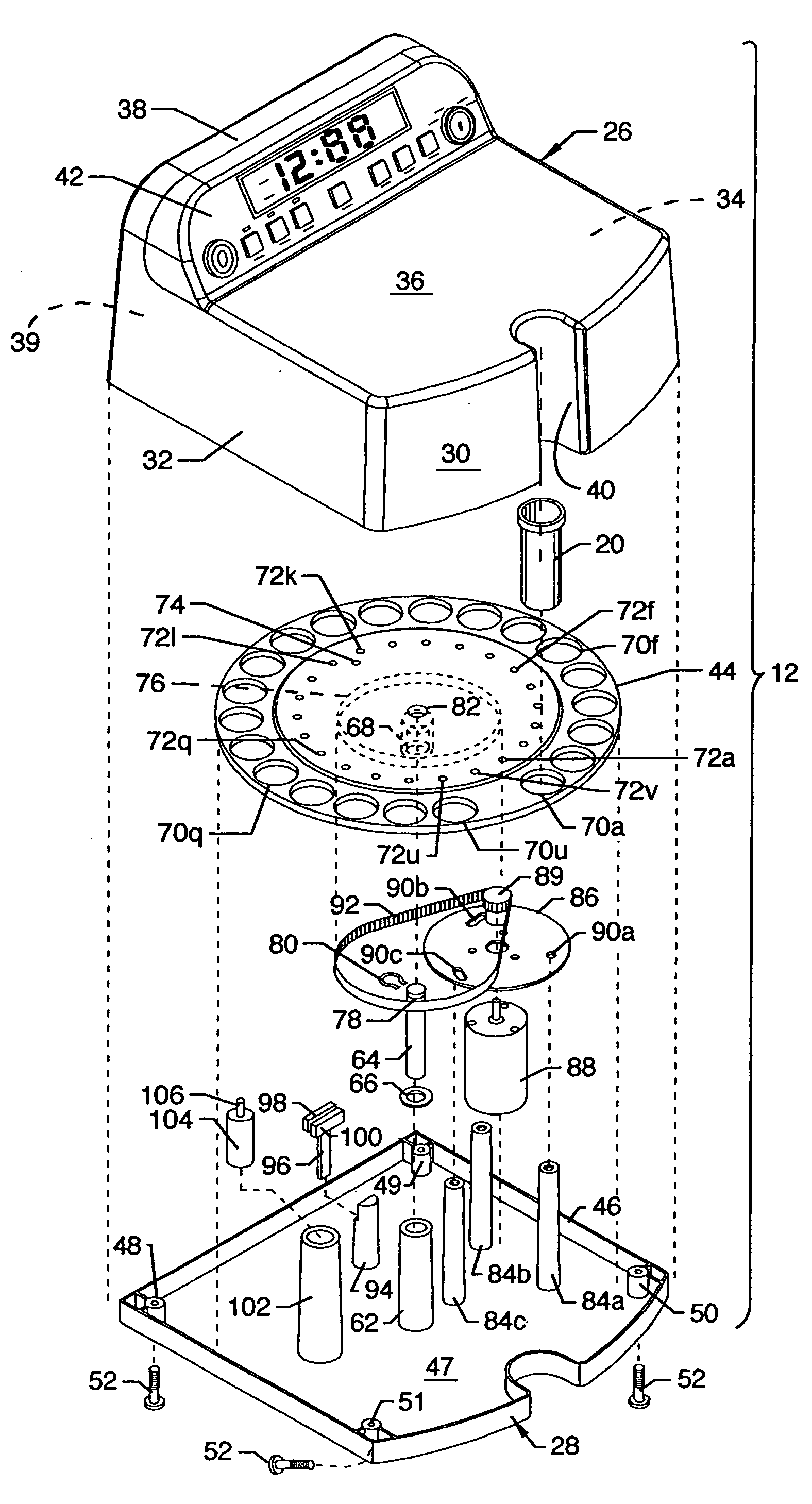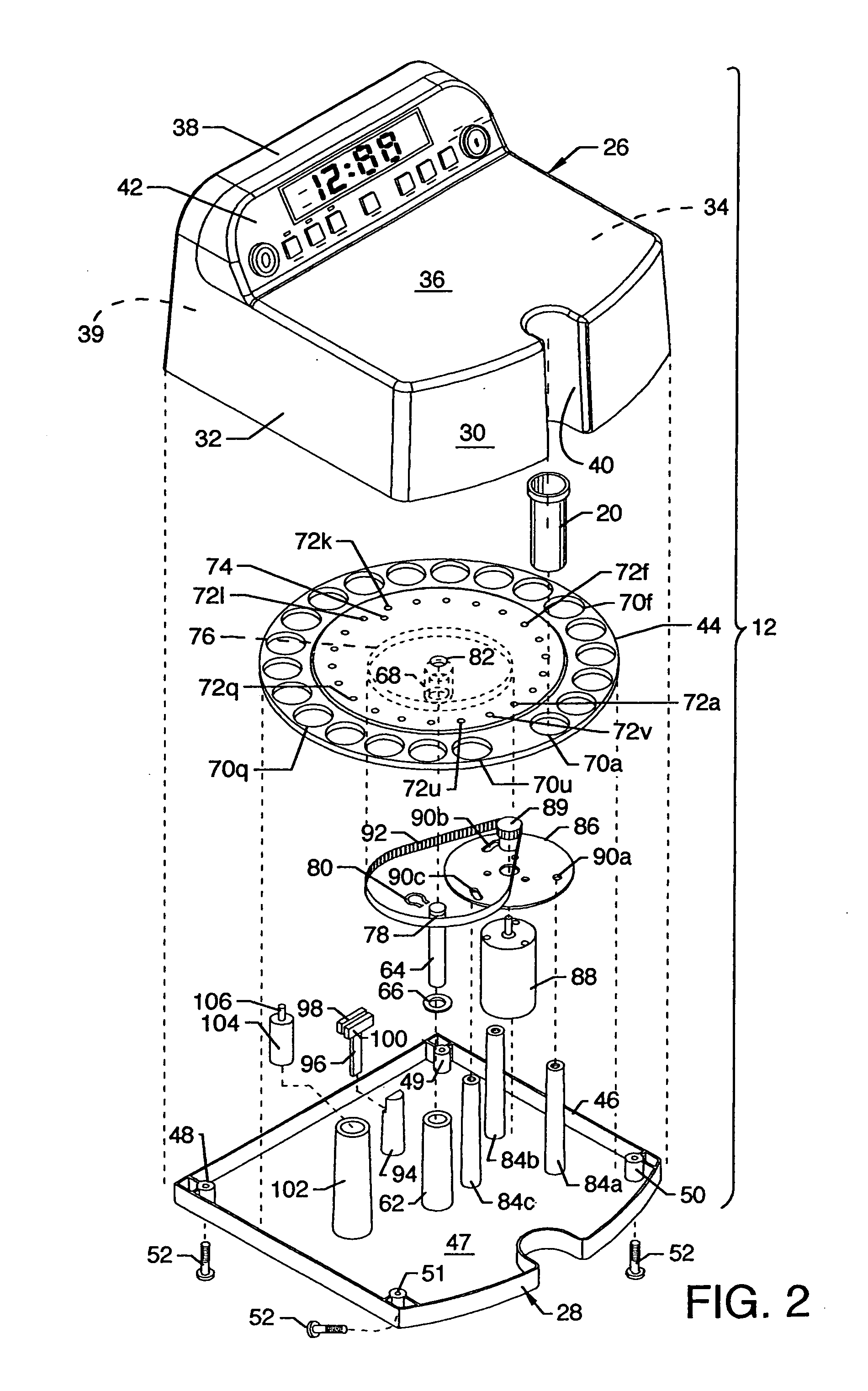Automated Meds dispenser system
a dispenser system and automatic technology, applied in the field of medical devices, can solve the problems of reducing the effectiveness of medications, allergic reactions, cross-contamination, etc., and achieve the effect of preventing unauthorized access
- Summary
- Abstract
- Description
- Claims
- Application Information
AI Technical Summary
Benefits of technology
Problems solved by technology
Method used
Image
Examples
Embodiment Construction
[0033]FIG. 1 is an isometric view of the automated Meds dispenser system 10, including an automated Meds dispenser 12 and a staging station 14. The staging station 14 includes a box 22 and a cover 13. The upper region of the box 22 includes a panel 18 having a matrix of holes 16a–16n extending therethrough for accommodation of a plurality of like vials 20, such as shown at the front edge of the automated Meds dispenser 12 and as shown in alignment with one of the holes 16a–16n. The holes 16a–16n in the matrix are identified by labels such as, but not limited to, MED 1 through MED 3 along one edge of the panel 18 and by the days of the week along an intersecting edge, and can be round or of other desired and other suitable shapes as required. The panel 18 is supported by other structure of the box 22 including four sides 22a, 22b, 22c and 22d and a bottom 22e. The cover 13 can be an open bottom box-like structure having a top 13a and sides 13b, 13c, 13d and 13e where the sides snugly...
PUM
 Login to View More
Login to View More Abstract
Description
Claims
Application Information
 Login to View More
Login to View More - R&D
- Intellectual Property
- Life Sciences
- Materials
- Tech Scout
- Unparalleled Data Quality
- Higher Quality Content
- 60% Fewer Hallucinations
Browse by: Latest US Patents, China's latest patents, Technical Efficacy Thesaurus, Application Domain, Technology Topic, Popular Technical Reports.
© 2025 PatSnap. All rights reserved.Legal|Privacy policy|Modern Slavery Act Transparency Statement|Sitemap|About US| Contact US: help@patsnap.com



